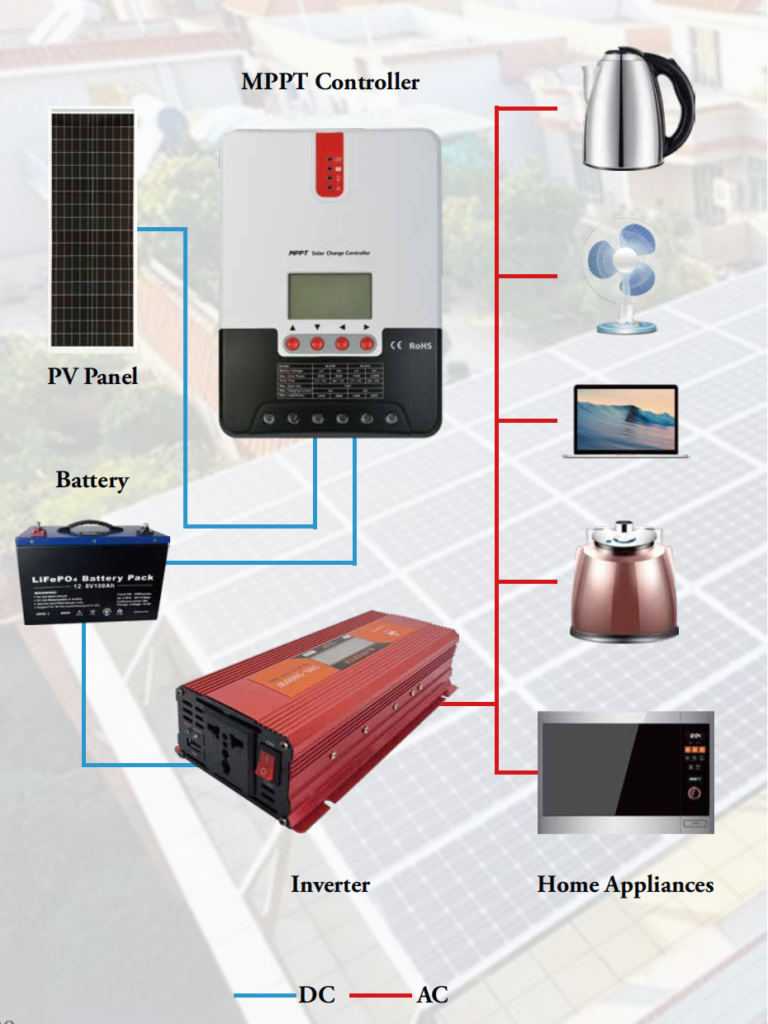Residential energy storage systems are becoming increasingly popular with residential solar customers today. According to a recent survey of more than 1,500 U.S. households conducted by solar power developer SunPower, about 40 percent of Americans are concerned about frequent power outages. Of those surveyed who have already installed solar power facilities, 70 percent said they plan to install battery storage systems. However, it has been shown that a variety of factors can affect the life of a residential battery storage system.
In addition to providing backup power in the event of a power outage, many battery storage systems allow for intelligent scheduling of power input and output, which is done to maximize the value of residential solar power systems. Moreover, some battery storage systems are optimized for integration into electric vehicle charging facilities.
Although the installed capacity for deploying energy storage systems is steadily climbing, their supporting deployment rate remains low. According to data released by Lawrence Berkeley National Laboratory (LBL), in 2020, 8.1% of residential solar systems in the U.S. are supporting the deployment of battery storage systems.
There are many options for residential battery energy storage systems. But in the United States, two manufacturers dominate the residential battery storage sector. According to a survey by Lawrence Berkeley National Laboratory (LBL), LG Chem and Tesla have more than 90 percent of the U.S. residential energy storage market, with Tesla having more than 60 percent of the market share.
The Tesla PowerWall battery storage system has a limited warranty that claims it will be free from defects for ten years after installation. It also warrants the PowerWall battery storage system to have an initial capacity of 13.5kWh and will guarantee its energy storage capacity according to a degradation schedule.
LG Chem says its energy storage system will maintain more than 60 percent of its energy storage capacity (9.8 kWh) for ten years. The batteries must operate between -10°C and 45°C to maintain warranty coverage.
Battery life is largely determined by usage intervals. As product warranties from LG Chem and Tesla prove, reaching the 60 or 70 percent capacity threshold is guaranteed for a certain number of charge cycles.
The Faraday Institute says two usage scenarios lead to battery degradation: overcharging and trickle charging. Surcharging is the act of pumping current into and fully charging a battery. Doing so can cause the battery to overheat and possibly even catch fire.
Trickle charging refers to the process of continuously charging the battery to 100 percent. Battery capacity will inevitably be lost in this process. This process will raise the internal temperature, which will reduce status and life.
Another cause of degradation over time, according to the Faraday Institute. It is the loss of lithium ions from the electrolyte in the battery. Side effects in the battery trap the available free lithium, which gradually reduces capacity.
While cold temperatures can stop lithium-ion batteries from working, they do not degrade the battery or shorten its useful life. The Faraday Institute says the overall life of the battery will be reduced at high temperatures. It is because the electrolyte between the electrodes breaks down at high temperatures, causing the battery to lose its ability to flow lithium ions. It reduces the number of lithium ions that the electrodes can accept into their structure, depleting the lithium-ion battery capacity.
Top 5 things to consider when installing home energy storage
1. Connect existing solar to the battery
Once the battery is installed, it must be interconnected with PG&E and other home energy sources, such as solar panels. You must also obtain a permit from your local jurisdiction. Due to safety concerns and the complexity of design and permitting, MCE recommends that you hire a licensed professional to help you identify, design, and install your energy storage system.
2. Adjust your storage space appropriately
Battery size depends on what you are backing up. An installation professional can estimate how many kilowatt hours of storage space you need by examining the devices you will use during a power outage. You can also look at your monthly bill to calculate your approximate daily energy usage.
3. Use your storage
If you’re integrating batteries with your solar system, you can take advantage of the new storage space by plugging your devices directly into the wall. Storage installers can even help you connect specific devices to the storage system to automatically receive power during a power outage. If you are using a portable storage system, you can plug appliances and equipment directly into the battery.
4. Consider Portable Options
If you don’t currently have solar power and are interested in a low-cost solar and storage solution consider a portable battery option. You can purchase batteries, such as the Yeti 3000, and portable solar panels. Depending on the size of the cell, you may be able to power essential equipment and appliances, such as CPAP machines, small refrigerators for storing medications or other crucial perishables, and cell phones or laptops.
5. Find a licensed storage contractor
Before deciding on your installation plan, try meeting with several professionals. Getting different opinions will help you choose the best storage size and design for your needs. It will also give you an idea of the cost range. To find a contractor, conduct an Internet search and look for word-of-mouth recommendations. Depending on your qualifications, you may also be able to get technical assistance with the planning, design, and installation of MCE.
Maintenance Matters
The National Renewable Energy Laboratory (NREL) recommends that home users install the battery in a cool and dry location, preferably a garage, where the effects of a fire can be minimized. The battery and its surrounding components should have proper inter for cooling and regular maintenance checks will help ensure optimal operation.
The National Renewable Energy Laboratory (NREL) says to avoid repeated deep discharges of batteries whenever possible because the more they are discharged, the shorter their life. If residential battery storage systems are discharged heavily every day, it will be time to add more batteries to the bank.
Batteries should be connected in series to maintain the same level of charge. While the battery pack may show a total word of 24V, there may be different voltages between the batteries, which is not bright for protecting the long-term operation of the battery storage system. In addition, it is recommended that the correct voltage set point be set for the charger and charge controller, as determined by the battery manufacturer.
The U.S. National Renewable Energy Laboratory (NREL) says that O&M personnel should conduct frequent inspections. Things to check include leakage (buildup on the outside of the battery) and whether the voltage is consistent.
If you want to know more about energy storage consultation, please feel free to consult: www. enetcl.com.At the same time, we also hope you can give us valuable advice or suggestions. Thank you!




